Hong Kong Intl' Lighting Fair Spotlights Green Lighting Products
Philips Lighting discreetly debuts
2010/01/13 | By Ken LiuThe 2009 Hong Kong International Lighting Fair (Autumn edition), held from Oct. 27 through 30, showed that it is serious about highlighting LED exhibitors, with a dedicated venue for such makers despite the event already inundated with energy-saving products, notably LEDs, compact fluorescent lamps, and T5 fluorescent tubes.
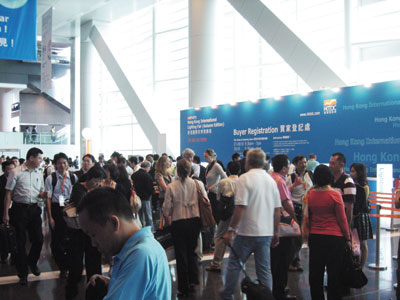
Other significant events at the HK lighting fair included the debuts of organic light emitting diode (OLEDs) by Philips and Osram as well as the launch of the NGO Asian Lighting Compact (ALC).
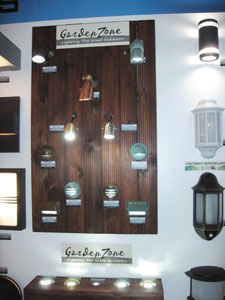
Having dethroned the Lighting+Building of Frankfurt as the world's No.1 lighting event, the HK lighting fair this year drew 27,838 buyers who shopped among 1,788 exhibitors spread over 63,406 square meters. Clearly Asian-oriented, the show drew over 90% of exhibitors from China, Hong Kong and Taiwan, with the mainland's exhibitors totaling 1,078, Hong Kong exhibitors at 406 and Taiwan's exhibitors at 188.
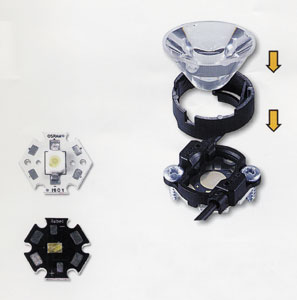
Trying to build the fair into a one-stop shop for contract-product and brand-product buyers, the organizer Hong Kong Trade Development Council (HKTDC) set up a venue dedicated to 301 brand-name suppliers including Philips, Osram, Megaman, Royal Doulton, Bright, Neo-Neon, Citizen, Nichia, with Cree being another spotlight.
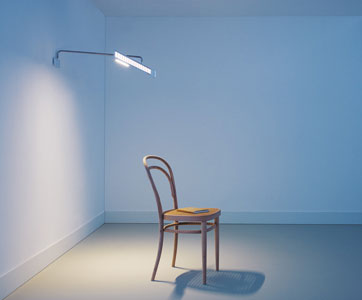
Elstead Lighting
Elstead Lighting Co., reportedly the leading British home-lighting manufacturer, showed two types of energy-conservative products-outdoor lanterns with PL light bulbs and lanterns for 2010 official launch with LED bulbs. "All of them are brass, classic lanterns in old London style," said managing director Jonathan Lucas, also incumbent president of the Lighting Association of the United Kingdom.
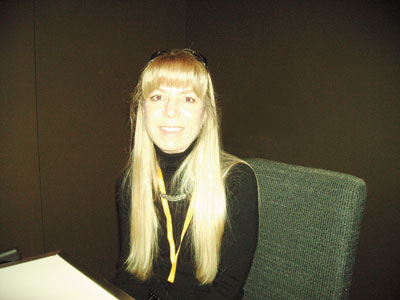
The outdoor lanterns with PL and LED light bulbs reflect Lucas' strategy for keeping the company's business buzzing all the time. "The key thing with old industries like lighting is that you have to stimulate the market with new ideas all the time. We bring new ideas every month to the market," he said.
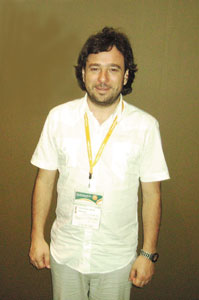
Inside the LED lanterns, Lucas said, are "Japanese-technology LEDs" and "U.S.-designed LEDs". "So, our quality and performance for the wattage is very good," he touted. Before using LED bulbs, the company outfitted its outdoor lanterns with 20 or 35W halogen bulbs. "Now, we use 3W LEDs and have reduced power consumption by 90% to produce the same amount of light," he added.
Elstead's PL lanterns use 18W PL CFL to replace 100W incandescent bulbs. This is a big success and the fixtures are only a little different from incandescent types, Lucas stressed. This is a good way to allow consumers to not only reduce energy cost but also contribute to the environment, he added.
Bullish about LED lighting's outlook, Lucas believes in five years LEDs will become popular in all markets, because prices are declining almost every month and volume is increasing. "We've seen in the last five years LED costs having dropped at an incredible pace. In some cases, LED lighting fixtures are only 40% above incandescent fixtures. The percentage gap is narrowing at 2 or 3 percent every month, making LEDs more viable."
Typically British consumers paid about US$0.40 per kilowatt/hour, compared to US$0.10 cent per kilowatt/hour after adopting LEDs, said Lucas to show confidence in the energy-saving merit of switching to LED lighting.
A second-time exhibitor, Lucas said that the British market is in rough times due mainly to lack of easy financing, which makes it difficult for businesses to carry out expansion projects.
By contrast, Elstead, Lucas said, completed the third quarter with a 10% increase in business, because "we continue introducing new designs, as well as cope with the recession by engaging in smart marketing, addressing consumer demands, selling and presentation to build new opportunities to grow business."
Modest Market Shares
Elstead owes the latest growth to markets outside Britain. Russia, Japan and Europe are showing signs of good growth. "Although new but we're doing well in those markets, where we had zero shares before but now we've got small portions," Lucas stated. Elstead exports only 15% of its products to these markets but aims to raise the percentage to 50% soon.
Pointing out that many markets are either lowering quality to maintain prices or raising prices without improving quality, Lucas said that Elstead is making prices more competitive and improving quality by using volume advantage.
Mechanizing manufacturing is key to Elstead's quality-competitiveness strategy. Volume usually enhances production-cost efficiency; so producing higher volume enables greater mechanization, which in turn lowers product prices, Lucas noted.
Boasting an advantage over other lighting manufacturers when markets demand quality products at fair or lower prices, Lucas said that Elstead is basically an engineering company with lighting production, enabling the maker to produce competitive, quality products. "In the last 12 months, we have invested a quarter million US dollars in new machinery, which enables us to do more processes in-house than having to subcontract."
BJB GmbH & Co. KG
BJB GmbH & Co. KG of Germany, the leading maker worldwide of lamp holders founded over 100 years ago, has also jumped on the LED bandwagon by introducing electrical wire connectors for LED starboards, on which chips, optical lens and electrical wires are fixed. These connectors allow manufacturers of LED lighting, without soldering or gluing, to connect wires and lens on the boards by simply pushing and clipping them in place. Without soldering, thermal is not an issue, said Hans Hagemann, BJB's Non-Executive Director-of-Sales.
Without established LED lamp standards, BJB has to work with LED manufacturers individually to develop connectors in accordance with particular specifications. So far, the company has offered connectors for LEDs from Osram, Philips Lumileds, Seoul Semiconductor and Edison. Confirming the big impact of not having universal standards, Hagemann said that established standards would make a world of difference to enable the maker to easily produce in volume on automated lines.
BJB, according to Hagemann, has developed a business model, based on building connectors allowing easier LED manufacturing, which is proving viable. "We try to carve out a niche by supplying products to lighting fixture manufacturers and even end users," he said.
The starboard connectors have been available for a year or so, said Hagemann. The connector market is good now as everybody is doing something with LEDs, he noted. However and due to the complexity and diversity of LED lighting, BJB builds connectors for conventional lighting fixtures, including E14 socket, GU10, MR16 and T8 LED light tubes, retrofitted for LED lamps. "Demand for our connectors is increasing slowly but stably because people need to learn to use LED lamps," Hagemann noted.
Having introduced 20-25 components for LED lighting, BJB only relies on LEDs for only 2% of its turnover.
To stay competitive, BJB will upgrade automation in Germany but gradually move labor-intensive production to China.
Hagemann pointed out that German lighting suppliers are not eager to replenish inventories for fear of double-dip recession, adding that people believe the global economy will rebound steadily but slowly.
Philips Lighting
Philips Lighting displayed many novel products this year, including OLED (organic LED) lights and a family of premium LED household lights dubbed "Ledino."
To keep copycats at bay, Philips unveiled both new products to the media at the Grand Hyatt Hotel instead of its eye-catching booth in the Hong Kong Convention and Exhibition Center.
The Ledino indoor collection comprises of 37 products ranging from ceiling, pendants, spot lights, wall lights to desk lights, al of which are equipped with Philips Lumileds' warm white Luxeon Rebel LED light bulb to offer soft light with color temperature range around 3,000 Kelvin.
According to Allard Bijlsma, Philips' CEO of Consumer Luminaires Business Group, Luxeon Rebel light bulbs, with three high-power LED chips, emit brightness of typical 40W halogen bulbs but consume only 7.5W, therefore saving 80% in electricity. The collection is not only energy efficient but also durable, lasting at least 20 years, Bijlsma said.
Also bullish about the Asian market for Philips' LED lighting, Bijlsma said that the Asian market for LEDs is set to explode as everyone looks for new, exciting ways to light their homes. "Given our leadership in the fast emerging LED market, Philips is spearheading the introduction of stylish LED-based lighting solutions to address this fast growing consumer demand," he said.
Being more guarded to introduce its OLED lights than that of Ledino, Philips unveiled inside a curtained press conference room a wall-mounted OLED light.
Multi-use OLED
Installed as a wall-mounted "blade," the OLED allows a user to adjust the light with simple rotations. Turning from a compact panel on the wall into a 3D piece suspended in space, the LED-integrated blade can be decorative and functional, with the lighting patterns changing with the position of the blade.
When not in use and folded against a wall, the frontal blade of the light, with 18 OLEDs, resembles a mirror. The back side has two different types of LEDs-ambi-light optic LEDs and high-power LEDs. Pulling the blade away from the wall activates the ambi-light LEDs to wash the wall with soft light. Pulling out the blade further and angled away from the wall dims the ambi-light LEDs, instead triggering the frontal OLEDs to cast a gentle, decorative light. Rotating the blade towards the floor dims the OLEDs but lights up the high-power LEDs to illuminate downwards, perhaps for reading while in a chair.
OLEDs are the next step forward in the evolution of solid state lighting technology, which illuminate by organic semiconductors rather than using filament or gas. But OLEDs will never replace LEDs because they have their own very specific and useful applications, stressed Bijlsma, adding that the two, however, complement each other very well, and provide different options in a new type of digital lighting that is becoming increasingly important in an energy-conscious world.
Individual Merits
Differentiating the differences between OLED and LED, Bijlsma said that the former are made of organic semiconductors as those in organic solar cells, while the latter is of inorganic crystals. And LEDs cast points of light to be brilliant, miniature bulbs. OLEDs, on the other hand, emit light evenly over its extremely flat panel, for a calm, glowing, diffuse and non-glaring light. The thin, flat OLEDs also enable them to be used differently from LEDs-or any other lighting source for that matter; while LEDs are excellent in creating sharp beams, adding drama and accent due to compactness, he added.
Philips started R&D of OLEDs back in 1991 as part of its development of OLED display screen, and began focusing on OLED lighting in 2004.
According to Bijlsma, Philips already has various OLED panels as samples for commercialization, and has stepped up efforts recently by setting up the world's first production line for OLED lighting in Aachen, Germany. This is a significant step forward in advancing crucial OLED manufacturing technology, and Philips will be one of the first companies to make OLED lighting technology available on a large scale. To be marketed under the Lumiblade brand, the OLED lighting plates will measure up to 50 square cm. and be available in wide-ranging colors and shapes, he noted. Philips' OLED lights produce around 20 lumens-per-watt on average, according to its engineers.
Not as protective of its OLED innovation, Osram also unveiled such lights at the fair.
Gloomy American Housing Market
In a different segment at the show, Kim Noerteman, marketing manager of Regency, ceiling fan division of Tacony Corp. of the USA, sourced for ceiling-fan lighting fixtures and energy-saving bulbs for such fixtures. Also she was looking for bathroom and outdoor lighting fixtures as her company was expanding, to cope with the struggling American housing market, to increase chances to seize as many orders as possible from different segments. "The housing market is terrible right now. It has never been that bad since they began watching the market," she said, adding that the ceiling-fan business is worst as it has ever been for most lighting or ceiling fan companies in the USA.
Echoing what many leading papers have been reporting, Noerteman said that people believe the recovery may be one or two years away. "The worst may not be over...houses were overbuilt. And credit lines are low, so Americans can't borrow easily to buy homes. It's terrible," he noted.
Regency distributes a slew of products including ceiling fans, power saws and vacuums for households, with China being the biggest source of its ceiling fans. "Our power saw and vacuum divisions are doing quite well," she noted.
Selling higher-prices, higher-end ceiling fans at dedicated lighting stores, Regency stays away from volume discounters as Wal-Mart and K-Mart. "Middle class consumers now prefer to buy lights at Wal-Mart and K-Mart to save as much money as they can during the crisis," she said.
Like other lighting suppliers, Regency is also seeking energy-saving solutions for ceiling-fan lights as the American government has begun this year to require consumers to use pin-base bulbs or 90W limiters to cut power usage. "But consumers hate the limiters because they are expensive...one costs $2 to $3.5 each. So we want to find energy-saving lamps for our ceiling-fan lights to meet such rule," Noerteman said.
Argentinians Also Pinched
The downturn is also pinching purchasing power of Argentinians, according to Sergio Canto, managing director, of Candiluz Iluminacion S.R.L. of Argentina. People kept two lamps in living rooms in the past but now only one, said Canto.
Canto noted that Argentinians are, generally, fond of European-style lamps. However, makers in China don't seem able to make such lamps, so low-income Argentinians can't take advantage of affordable Euro-styled lamps made in China. As result, they usually go to hypermarts to buy cheap China-made lights and others.
Philips and Osram are household names in Argentina due to wide-spread advertising, Canto noted. Argentinians tend to choose big-name lamps over generic types if price gaps are small. Osram and Philips lamps were prohibitively expensive in Argentina before, but no longer since importers have begun importing China-made Philips and Osram products.
Canto usually demands suppliers to steadily offer new, quality, competitively-priced, and national-standard certified products, observing that Argentinians tend to accept lamps priced between US$15 and US$120, with costlier, intelligent lighting being acceptable to only 10-20% of Argentinians.




